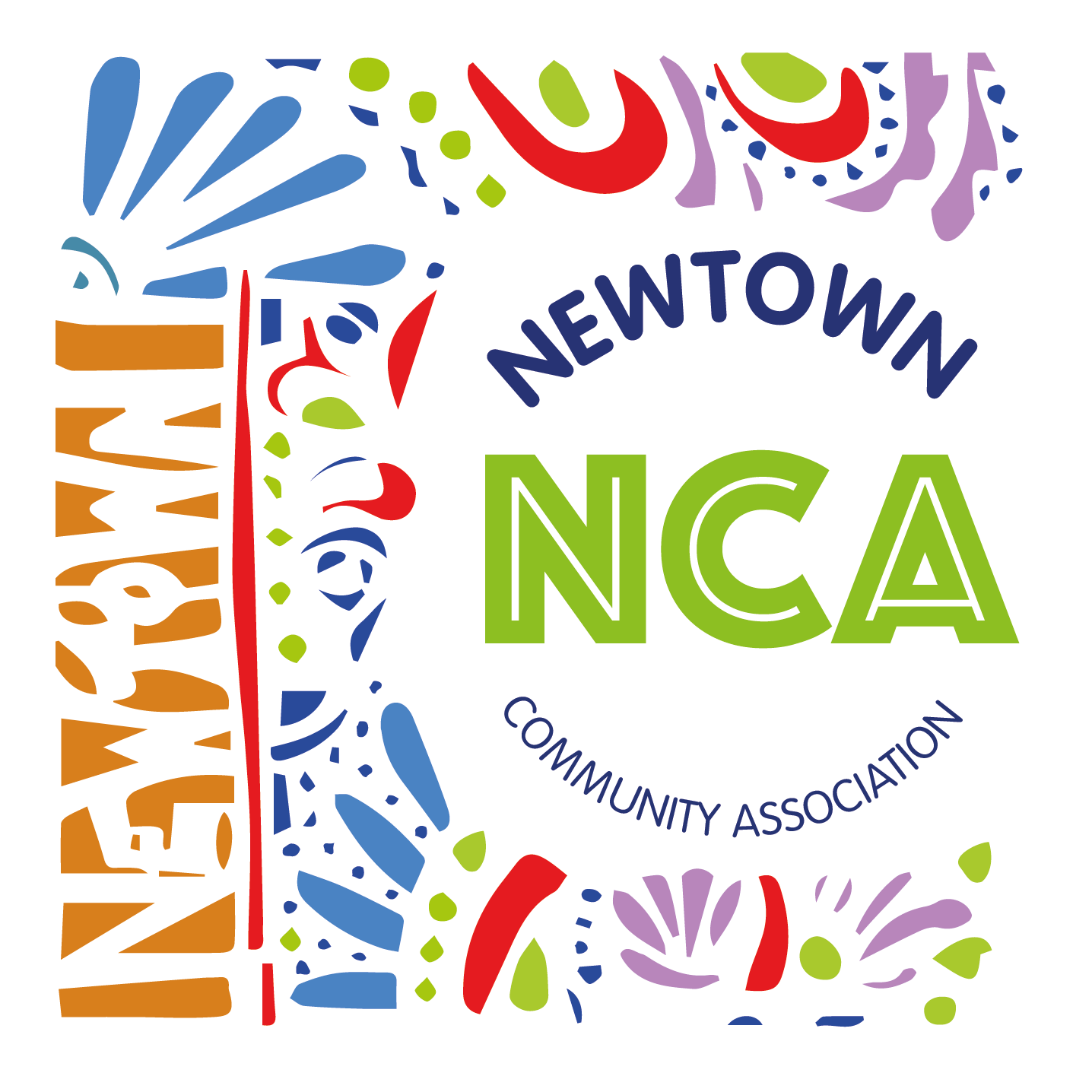In and around Newtown
 The land that became Newtown was dominated by the Shoote Brook which was often referred to as the Shit Brook, and was used as an open sewer from the saxon times.
The land that became Newtown was dominated by the Shoote Brook which was often referred to as the Shit Brook, and was used as an open sewer from the saxon times.
The brook rose near St Anne's Chapel and flowed down close to Clifton Road, under the Triangle car park, down the valley behind Denmark Road, before joining the river near the Port Royal.
Blackboy Road is believed to have been a Roman road.
Roman burials often took place near to roads outside of cities.
In 1837, when building Grosvenor Place, workmen discovered six slightly glazed Encaustic Flemish tiles. Also the lower jaw of a human, part of a red clay urn and several pieces of red Samian Ware.
The illustration shows the East Gate of the city, the main street in the middle is Sidwell Street.
The Shoote Brooke can be seen, close to St Anne’s Chapel, approximately two thirds down the image.
Paris Street was previously named Shitbrook Street, and at the bottom of the street there was a small bridge next to the Shoote Lake. The lake belonged to the St Magdalen Hospital for lepers located in Bull Meadow.
 In the 13th century a chapel, dedicated to St Catherine, stood before the rise of the hill to Heavitree. The main benefactor of the chapel was William de Tracy, one of four Knights who murdered Thomas Becket, the Archbishop of Canterbury.
In the 13th century a chapel, dedicated to St Catherine, stood before the rise of the hill to Heavitree. The main benefactor of the chapel was William de Tracy, one of four Knights who murdered Thomas Becket, the Archbishop of Canterbury.
The site of the 15th century St Anne’s Chapel was originally an ancient hermitage and attracted worshippers and offerings from passing travellers entering and exiting the city through the nearby East Gate.
By the 16th century rich red clay from the area was being used to make bricks which built buildings across the city and beyond.
In 1689 a widow named Ann Baker left in her will land that she owned, named 'Summer Lands'.'Summer Lands' which stretched from approximately where Portland Street to Heavitree Road is located now and up the hill as far as where the workhouse was later built in 1700.
The land, approximately four acres in size, was assigned to Christopher Sandford, John Youatt and Peter Clapp. Christopher Sandford owned 66% of the land, with the remaining 34% split equally between Youatt and Clapp.
On 17th December 1689, two weeks after the land had been granted, the three men assigned Roger Cheeke, William Bidgood and others, to ensure that all rental income from the land be used for the binding out of one, two, or three children of the said parish of Saint Sidwell, apprentices to some honest trade or employment, and to pay the residue of the said rent and profits to John Youatt and Peter Clapp.
These men became the founding trustees of the Sandford Charity and were joined by John Withers (a minister), John Weekes and Gregory Hooper.
The following extract is from a book of 1821 titled 'Report; Containing that Part which Relates to the City of Exeter' :
 "By lease, bearing date 4th November 1701, the trustees demised to the corporation of the poor of the city and county of Exeter, a parcel of ground at the eastern end of the higher of the two closes called Summerlands, near the hospital or workhouse then lately erected, and containing by estimation, 72 rods of land, bounded on the north, east, and west, by the lands of the said hospital, for a term of 1,940 years from Christmas 1707, at the yearly rent of 20s".
"By lease, bearing date 4th November 1701, the trustees demised to the corporation of the poor of the city and county of Exeter, a parcel of ground at the eastern end of the higher of the two closes called Summerlands, near the hospital or workhouse then lately erected, and containing by estimation, 72 rods of land, bounded on the north, east, and west, by the lands of the said hospital, for a term of 1,940 years from Christmas 1707, at the yearly rent of 20s".
The charity technically still exists today, although under different names. The United Charity of Baker & Sandford was registered in 1962 and operates for the general benefit of the poor living in the boundary of the ancient parish of St Sidwells. This charity is linked to another charity named ‘The Parish Lands and other Charities’ which provides housing and accommodation and Grants for education to young people, the elderly and people with disabilities who live in the area.
Sandford Street was named after Christopher Sandford.
The area remained very rural until the first major property that was built in 1700 (see 'The First Workhouse').


